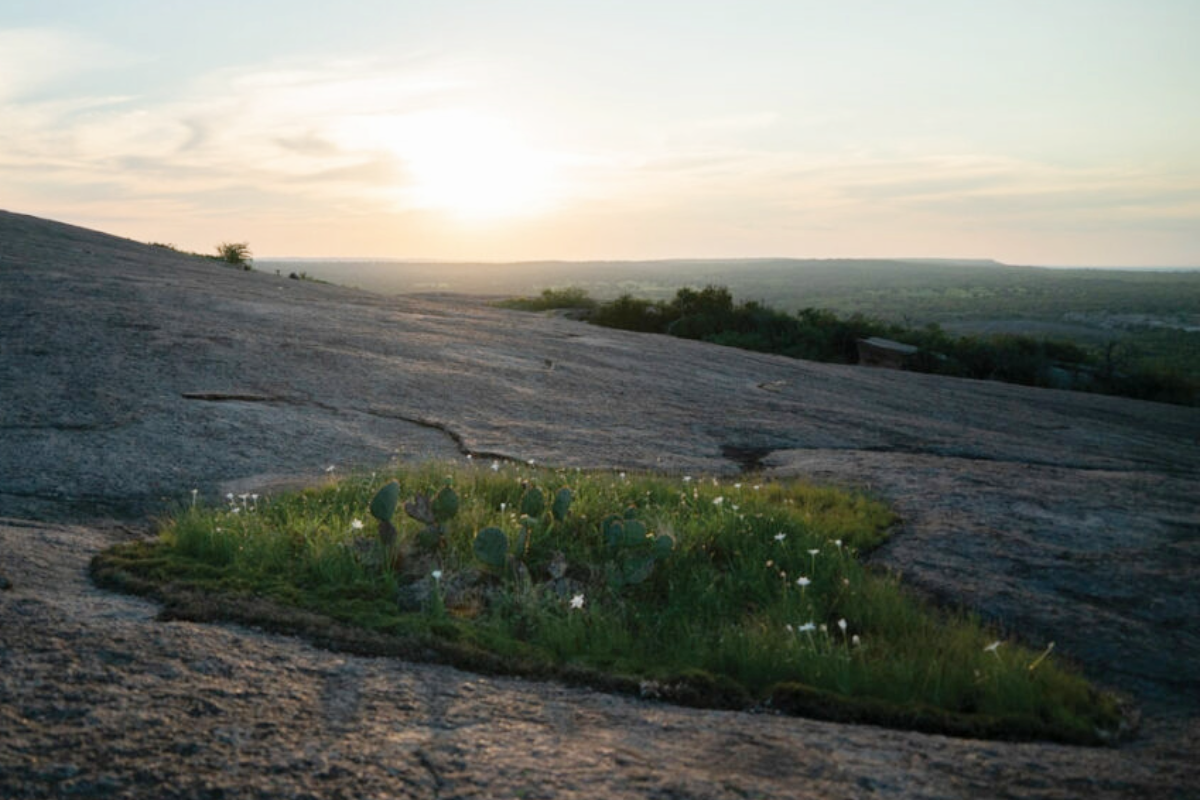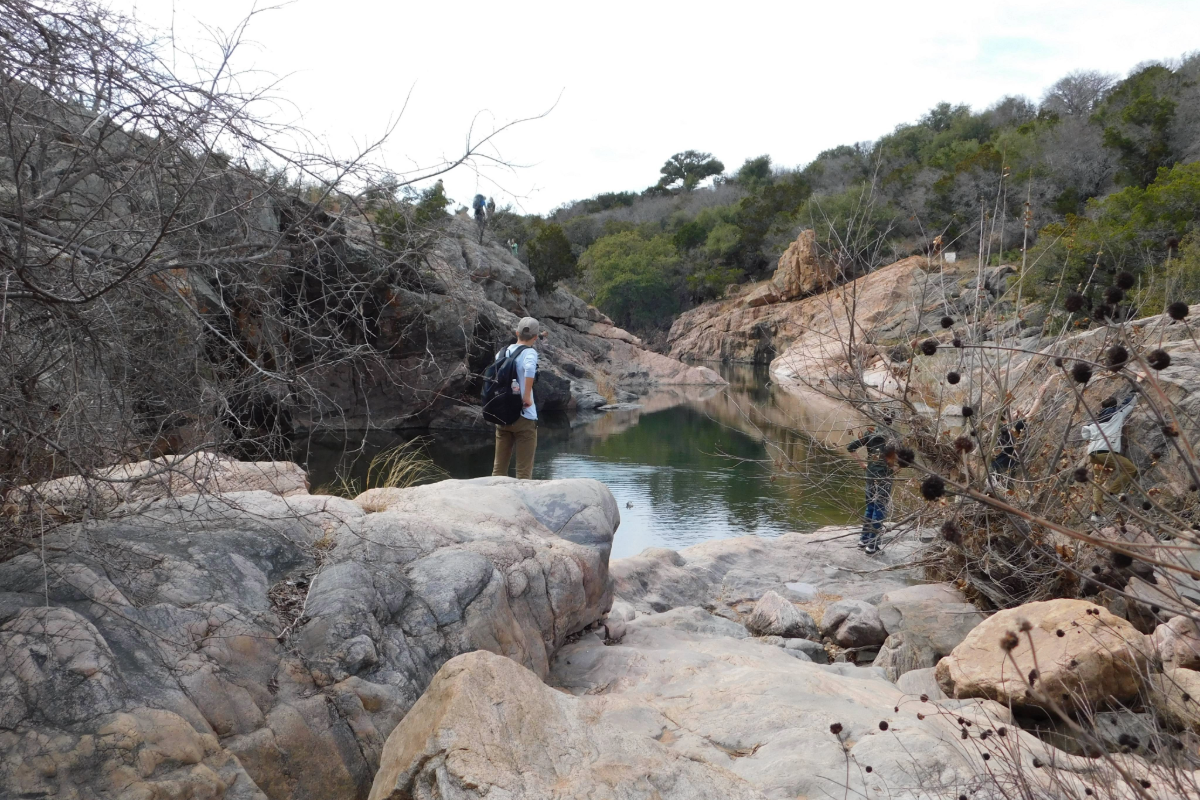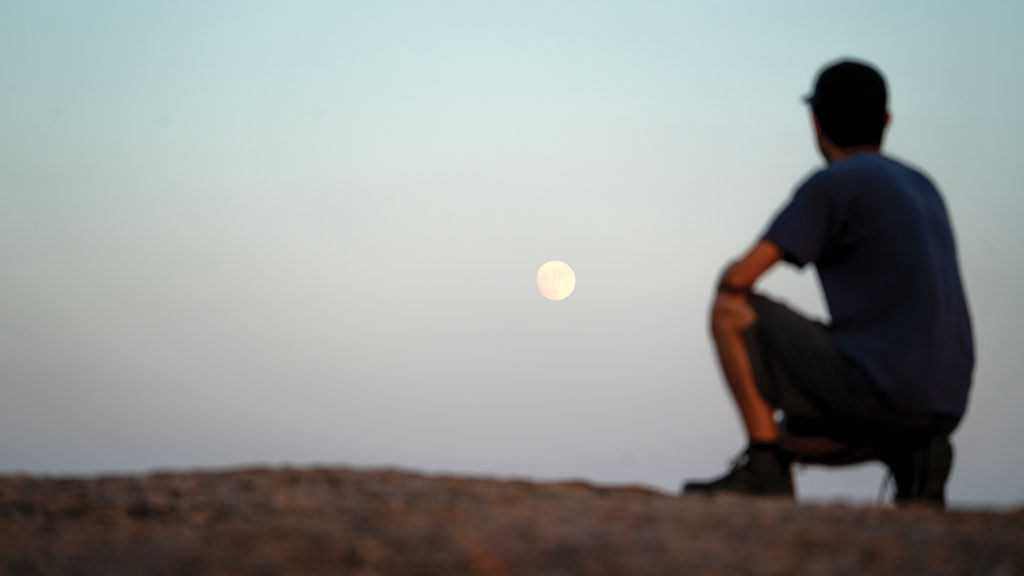
Photographer and friend Kevin Ting watches the full moon rise over Enchanted Rock. Ting planned the photo out and I took the picture. Staff photos by Dakota Morrissiey
The billowing pink granite of Enchanted Rock emerges from the Texas Hill Country like a stone whale frozen mid-breach on an oak-covered sea. A stunning setting speaks for itself. It doesn’t take an artist to appreciate the majesty of the rock, but it can be surprisingly hard to capture that obvious beauty on camera.
How do I get the whole thing in the picture? What is the perfect sky-to-land ratio? Why can’t I see anybody’s face in this sunset photo? Why is everything blurry? Why can’t you tell how glorious (insert scenic landscape or iconic natural feature) is? WHY is the moon so small in the pictures and so big to my eyes?
These are common questions when taking photos of amazing places. Traveling to breathtaking locations and snapping memorable images have become inseparable activities, but they aren’t always a match made in heaven. We might never be able to fully capture the depth of our experiences on camera, but with some tips, tricks, and know-how, we can try.

I made the trip to Enchanted Rock State Natural Area on the Llano-Gillespie county line with friend and globetrotting-photographer Kevin Ting, who has been documenting the wilds of Texas for years. He is particularly adept with landscape, wildlife, and celestial photography. On this trip, he had planned to capture the rising full moon, and Enchanted Rock is the perfect vantage point for this kind of shot.
“I feel like Enchanted Rock has a lot of really good photo opportunities, but you have to know what you’re looking for,” he told me as we marched toward the summit.
Preparation is key for beautiful photos. If you’re gunning for a sunset photo, know what time it will happen and be at your chosen spot an hour beforehand. If your heart is set on a romantic picture, arrive at the location before other visitors swarm the scene. If you’re shooting wildlife, find out the when the animals are most active. These are just a few tips for plotting out a successful shoot.
In this case, we were shooting for the moon, so it was important to know when it would rise and where. The moon rises surprisingly fast, and if you aren’t set up, you might miss it.

Knowing how to put your subject into context is also a major factor in taking a good photograph. We have all seen shocking sunsets and mind-blowing moons, but they don’t always translate on camera. The moon might appear small in photos and the sun washed out.
Enchanted Rock is incredible, but seeing the whole thing on camera can be difficult. To combat this, you just have to frame things properly.
“I think if you’re coming out to Enchanted Rock, give it a sense of place,” Kevin said as we arrived at the summit. “Give context to your photos. Let people know this is the only place in the world this picture could be taken.”
This can be a tall order, but with a little forethought, your photos will improve. It might not always be possible to take a picture of an entire landscape or the minute details that make something beautiful, so choose a particular scene to capture the spirit of a place. Shoot your family’s silhouette to a setting sun instead of forcing them to stare into it, photograph a flower with the backdrop of a mountain range, or pick a specific vista that showcases an aspect of your location you wouldn’t otherwise notice.
We both busted out our cameras in preparation for the shoot and got situated leading up to the moonrise.
“Know your gear,” Kevin remarked as we waited. “Knowing your gear is a good thing to do.”
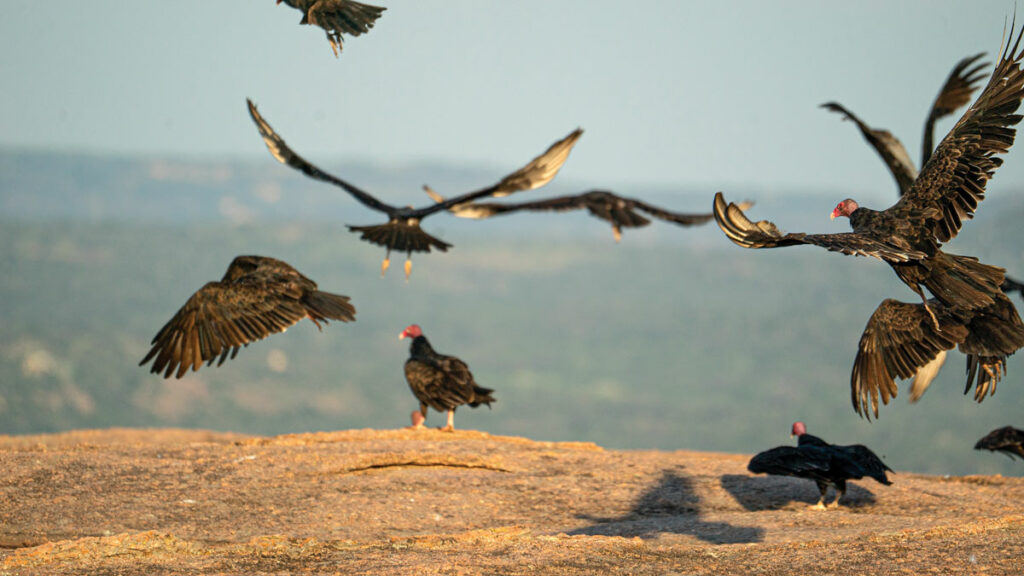
Many of us have high-powered cameras on our phones or an old DSLR bought on Facebook Marketplace. Others might even have drones capable of taking insane aerial shots. Maybe you found your old AE-1 in the garage and you’re shooting on sweet 35mm. Whatever tools you have, your photography will improve dramatically the more you understand how to use them. Learning the basics of shutter speed, aperture, and ISO settings will boost your game.
“A tripod is my best friend for sure,” Kevin noted, giving his personal take on essential camera gear.
Your photo abilities might be limited by your equipment, so choose shots based on what you have rather than attempt the impossible. A long lens is needed for breathtaking wildlife photos, a low aperture lens is necessary for crisp portraits, and a tripod is essential for steady shots over time, and so on.
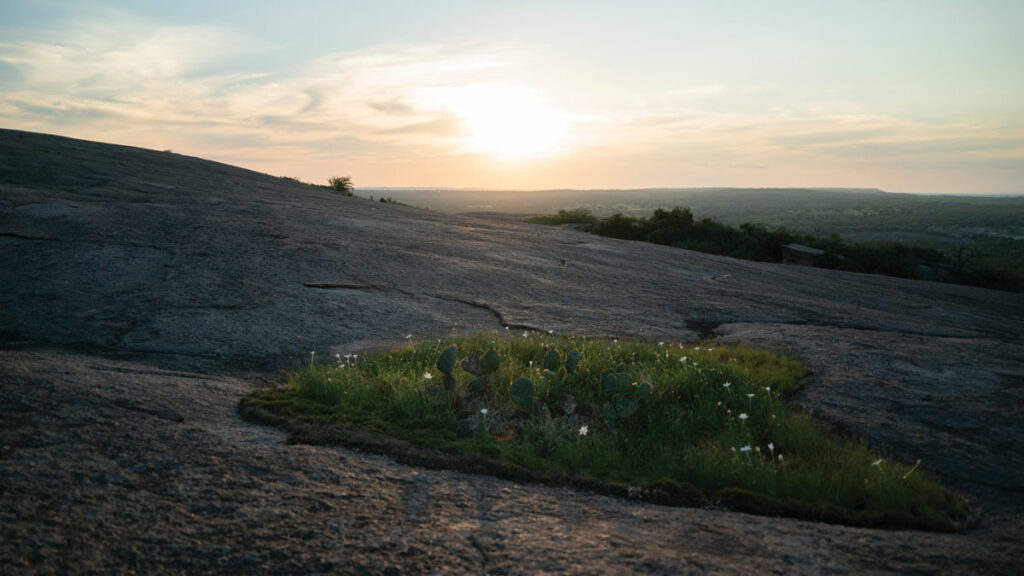
I worked alongside Kevin as he set up his camera for the rising moon, which was to come up to the northeast of the rock. The sun was setting behind us, casting an orange glow that lit up the pink granite. A flock of turkey vultures was hunkered down nearby, ignoring our efforts.
The moon crested on the lunar-esque surface of Enchanted Rock. We had a short window to capture it in its full glory before it rose too far from the landscape. We hopped back and forth, alternating posing for photos and taking photos and using ourselves and the rock’s surface as context for the moon’s size.
Just as the sun dipped fully behind the horizon, the vultures took off all at once, soaring to the southwest. The moon continued to climb out of reach of our lenses, and it was time to head back to the car. Like any good adventure, we got lost in conversation as we made our way down the trail, and then we actually got lost heading down a rugged ravine off of the beaten path.
We have both been to Enchanted Rock a dozen times, but we always seem to make the same wrong turn on the way down.
dakota@thepicayune.com



